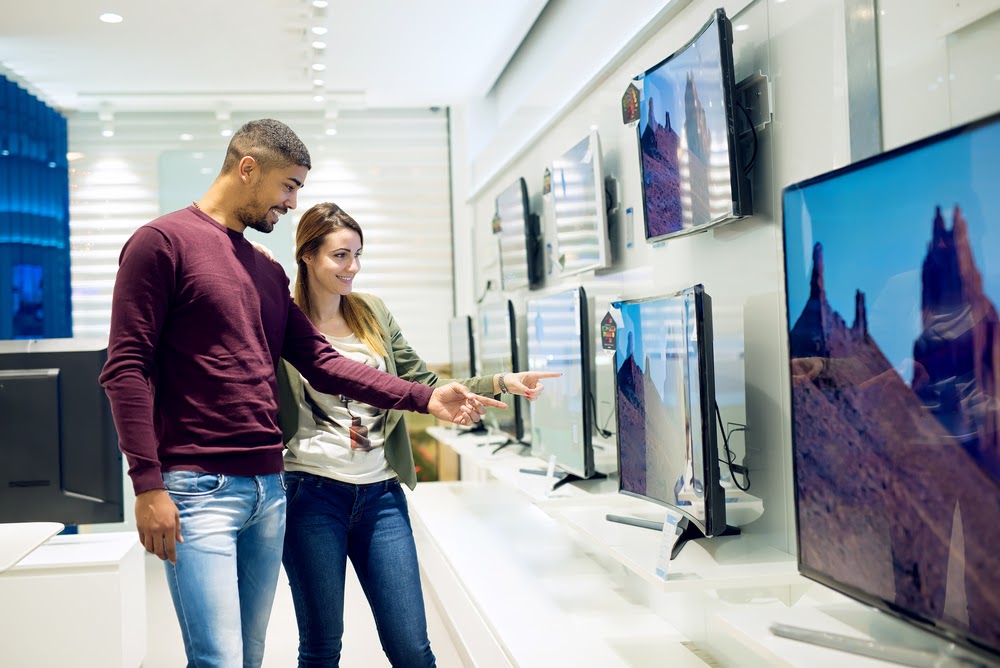Showrooming in retail describes the process in which a consumer looks at a product in the store and then purchases it online, oftentimes at a lower price point. In the beginning, showrooming was perceived as a threat to brick-and-mortar sales. Now, retailers have found a way to benefit from the product interaction that occurs as a result of showrooming.
How Retailers Can Adapt to Showrooming
Even if a retailer can’t beat an online price, there are other ways of adding value to the in-store experience. Showrooming brings consumers into a store; this gives retailers an opportunity to “steal” those sales if they can offer a better value than the online seller. This opportunity has changed the perception and allowed retailers to confidently compete in the age of Amazon.
Some retailers acted in direct response to showrooming. Best Buy took bold steps to maintain its competitiveness in the consumer electronics market. The retailer instituted a price matching policy and in-home pre-purchase consultations to maintain its appeal to its customers. It also changed its business model, charging manufacturers to display their products in branded areas of the store, similarly to department stores and improving its mail order service.
Retailers can leverage the shopping experience to draw customers away from the internet with in-store events or special in-store sales. Shoppers who enjoy personal service will prefer the in-store experience, especially when the store staff is well trained and equipped. The increasing use of tablets by sales staff allows them to provide better information about products, check inventory faster, speed up checkout, and even view the customer’s past purchase history to make more personalized shopping suggestions.
Retailers can also cater to shoppers who prefer to minimize human interaction. Hointer, a Seattle men’s store founded by a former Amazon executive, uses robotics to allow the customer to select from a lineup of over 150 garments, try them on, and purchase without a salesperson even being present. It recreates the impersonal, streamlined online shopping experience with the convenience of fitting rooms and immediate delivery.
Showrooming in Retail Can Be an Opportunity
Retailers can take advantage of showrooming by creating an omnichannel retail experience. Showrooming in a store doesn’t imply that the sale is lost. With the proper motivation, the consumer can buy the item on the retailer’s website.
Walmart has equipped its staff with tablets that allow them to service customers in-store or to place orders for home delivery. They have also installed kiosks where customers can shop on Walmart.com from a brick-and-mortar location. Customers can pay for their orders in cash, if they choose, and have their orders shipped to their addresses or to the store for pickup.
Retailers Can Encourage Webrooming

The interaction between showrooming and webrooming can be observed in car sales. Tesla had a showrooming strategy from the onset, displaying cars available for purchase online in malls and other “galleries,” but not opening dealerships. Toyota began exploring an omnichannel sales funnel last year, allowing buyers to begin the process online and giving dealership employees tablets to complete the deal in person. With the advent of COVID-19, that sales model has expanded to other carmakers.
Leveraging Mobile to Encourage Interaction and Sales
Mobile plays an important role in showrooming in retail.
Besides enabling fast price comparisons and online ordering, smartphones can draw consumers into stores for purchases as well.
A third-party rewards app can encourage consumers to interact with products of all kinds by offering incentives and making shopping fun and easy. Using beacon technology, Shopkick can draw the user’s attention to items by rewarding them for scanning their barcodes. This can lead to high rates of first-time brand exposure and incremental sales. Even if the consumer doesn’t buy the product at the time of exposure, the brand still wins if a purchase is made later, in a store or online.
Shopkick is highly gamified. It creates a digital scavenger hunt for users, building brand familiarity and encouraging product interaction and sales. Consumer shopping habits, including showrooming practices, are meticulously reported, providing retailers with a wealth of behavioral information and proven ROI.
Shopkick has helped our partners find fun and easy ways to encourage product interaction and purchases. Contact Shopkick to learn how to draw more consumers to your product, website, and store.
Image courtesy of Dusan Petkovic



